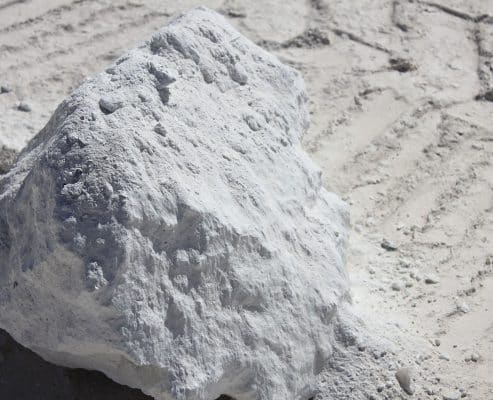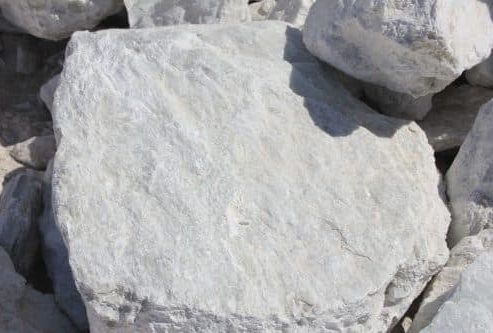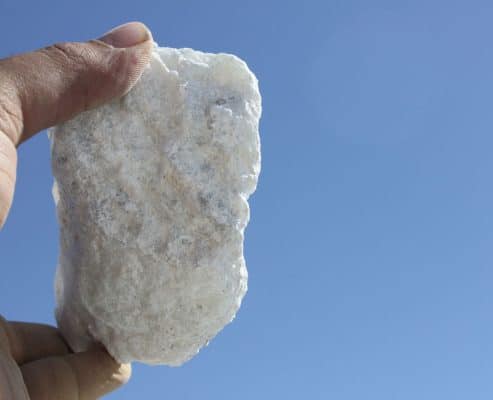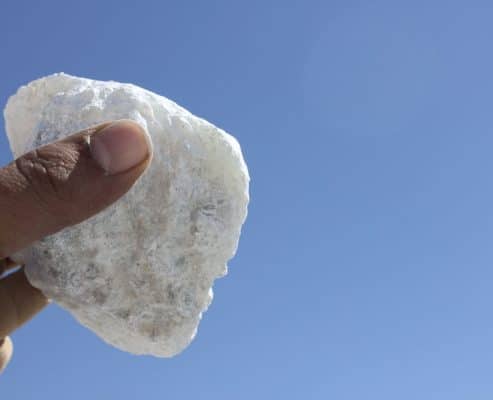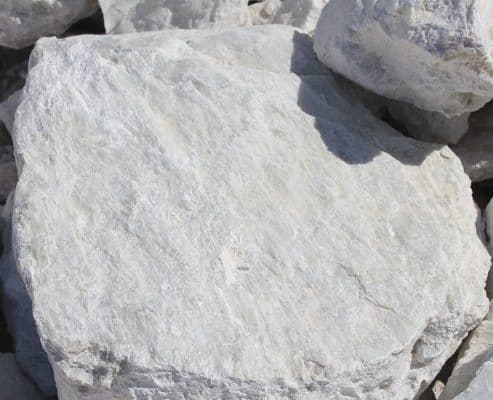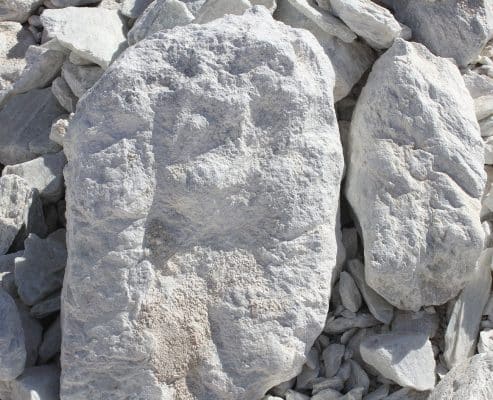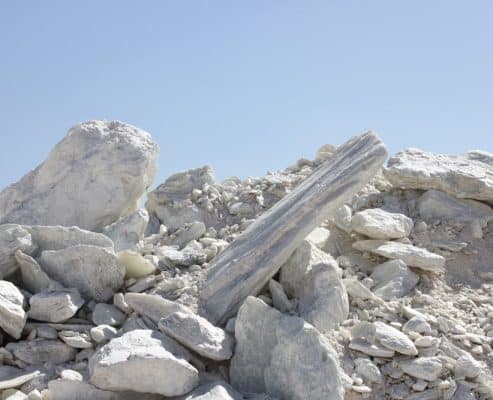Talc H2Mg3(SiO3)4
Talc, also known as talcum powder, is a naturally occurring clay mineral. Its chemical makeup is hydrated magnesium silicate, with the formula H₂Mg₃(SiO₃)₄ or Mg₃Si₄O₁₀(OH)₂. Found in loose form, talc is a major ingredient in baby powder, often mixed with corn starch for added absorbency. Talc typically occurs in flat, sheet-like formations (foliated) or fibrous masses, with a very rare crystalline form. Interestingly, it has a property called perfect basal cleavage, meaning it can break cleanly along a specific plane. While not elastic, these flat structures of talc do possess a slight degree of flexibility.
Talc Productions
Talc Composition: The passage confirms that the main component of this talc is hydrated magnesium silicate, which is consistent with the general definition of talc.
Talc Deposit Shape: The talc is found in lens or vein formations within the rock, particularly concentrated in the lower and upper basal sections. This indicates a layered or stratified deposit.
Talc Deposit Dimensions: The raw talc bodies are described as being quite large, with heights reaching 80 meters and widths of 50 meters. Thickness varies between 5 and 20 meters.
Talc Deposit Reserves: The estimated reserve of this talc deposit is a substantial 365,000 tons.
Is there anything else you’d like to know about this talc production or talc deposits in general? I can try to find additional information for you. For instance, I can tell you more about:
Global Talc Production: You might be interested in learning about the leading talc producing countries or regions.
Uses of Talc: Talc has various industrial and consumer applications. I can provide details on these.
The passage accurately describes talc’s versatility, being used in a wide range of products like paints, paper, pottery, and cosmetics.
It’s also used in industrial applications like rubber manufacturing and as a lubricant.
Important Note on Asbestos:
Health Concerns: It’s crucial to mention that talc can sometimes be contaminated with asbestos, a known carcinogen. Inhaling asbestos fibers can lead to serious health problems, including lung cancer.
Regulations: Due to these health risks, the use of talc containing asbestos has been banned or heavily restricted in many countries.
Safer Alternatives: Thankfully, safer alternatives to talc containing asbestos are available for most applications.
TAS Flowrance Group can Supply the Raw material of Talc:
Products: Raw talc, talc powder, and talc lumps
Quality: High quality
Applications: Many industrial applications (unspecified)
Price: Competitive pricing
Origin: Natural rock from Egyptian mines
TAS Talc Specifications:
| ELEMENT | |||
| SiO2 | 60 – 62 | 60 – 61 | 53 – 58 |
| TiO2 | < 0.01 | < 0.01 | < 0.01 |
| AL2O3 | 0.30 – 0.50 | 0.50 – 1.00 | 1.00 – 2.00 |
| Fe2O3 | 0.10 – 0.20 | 0.20 – 0.40 | 0.50 – 0.70 |
| MnO | 0.01 | 0.01% | 0.01 |
| MgO | 31.0 – 32.5 | 30.0 – 31.0 | 28.0 – 30.0 |
| CaO | 0.14 – 0.30 | 0.50 – 1.00 | 3.00 – 6.00 |
| Na2O | < 0.01 | < 0.01 | < 0.01 |
| K2O | < 0.01 | < 0.01 | < 0.01 |
| P2O5 | 0.01 | 0.02 | 0.04 |
| L.O.I | 4.5 – 5.0 | 5.5 – 6.5 | 8.0 – 9.0 |
Talc Standard Size:
| Element | % | % | % |
| Whiteness | 90.00 min | 86.00 min | 83.00 min |
| SP.gr. | 0.55 | 0.55 | 0.55 |
| P.H | 7.00 | 7.20 | 7.20 |
Please Submit your inquiries

